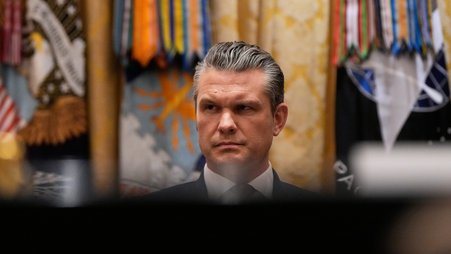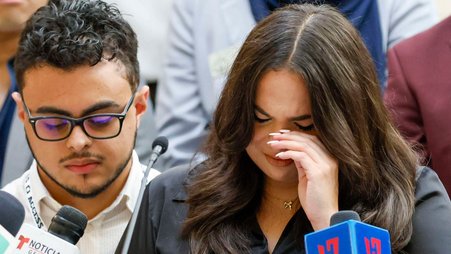Social media bans in prison cause harm to journalists — both inside and outside prison gates. For journalists in prison, access to social media is critically important to gathering information, communicating with sources, and sharing their work with the public.
Prohibiting access to social media and heightening penalties for violations, as the Federal Bureau of Prisons has proposed, would further deny journalists in prison the right to exercise their freedom of expression.
The proposal, which could also bar incarcerated people from having others operate social media accounts on their behalf, would additionally deny journalists outside prison their ability to talk to incarcerated people. That’s a denial of rights that cannot be allowed.
It is crucial to find a balance between security concerns and the rights of individuals, including journalists on the inside. No one can discount the daunting task that prison officials face having to filter out nefarious actors seeking to use social media to commit crimes from those upstanding prison residents that pose no harm to the public.
But as a former incarcerated journalist without ill intentions, I had to contend with a total social media blackout as if I were seeking to wage jihad against America. Thousands of other journalists face the same obstacles.
Social media bans act as a blockade to any source of information that incarcerated journalists could use to produce high-quality work.
In 2022, after 12 years in federal prison for drug trafficking, I became a journalist writing for outlets such as parents.com, The Marshall Project, and the Columbia Journal. I had a burning desire to rewrite the narrative that was being fed to my country about people like me who lived behind the fence.
But for journalists who do not write about life behind the fence but instead choose to write about issues that face the country outside of prison, social media bans act as a blockade to any source of information that they could use to produce high-quality work.
This is why we must collectively breathe fresh air into the fight for the rights of incarcerated journalists who are smothered by social media bans. And although the currently proposed rule might make a ban official and increase the risks faced by those who use social media inside prisons, in my experience and that of other federal inmates I know, incarcerated people already have no meaningful access to social media.
Social media provides a platform for journalists and writers to share their work and engage with not only their professional network but also their audience. A ban on social media in prison, like the one I faced, makes it impossible for journalists and writers to connect with their readership, potentially limiting their impact and reach. It begs the question: What good is a writer without a reader? Questions like these stab at the soul of a dedicated journalist, causing wounds that may never heal.
The problems that social media bans in prison present a journalist go beyond keys, locked doors, or other digital barriers. There are also long-lasting psychological and emotional consequences that stem from not being able to amplify your voice and be heard.
For journalists and writers, social media can serve as a means of therapy, inspiration, and creative expression. A ban on social media can lead to feelings of isolation, frustration, and a loss of an outlet for self-expression impacting your mental well-being. These mental strains add to a weight that is already too much of a burden to bear.
The social media ban in federal prison transformed me into a rule-breaking miscreant. Third-party companies that outmaneuver the existing messaging systems, such as CorrLinks, allow incarcerated writers to bypass the digital gatekeepers and access the eyes and ears of the general public.
I will not divulge how these third parties operate but it goes without saying that an inmate’s use of them is illegal and if caught using such a resource an incarcerated journalist faces harsh, even tortuous punishments, such as weeks in solitary confinement or even months added on to their sentence.
While living inside prison walls, a journalist’s voice does not go away. Instead, it’s stored in an attic of legislation and bad regulation.
I was caught using one of these disallowed services but was able to dodge time in solitary confinement because of a technicality. Many of my comrades on the inside were not so lucky, and the bureau’s proposal could make the situation even more dire.
While living inside prison walls, a journalist’s voice does not go away. Instead, it’s stored in an attic of legislation and bad regulation. But incarcerated journalists, like every other journalist, want the public to know the truth.
Whether it be about war, abortion, poverty, or prison itself, incarcerated journalists deserve the right to report a well-informed story to the world. They deserve the right to tell the world how we really lived and struggled to remain safe and sane in what is sometimes a deadly environment. They also deserve the right to tell the story about some far-off village halfway around the world if they choose.
An incarcerated journalist deserves the right to have a voice, and people on the outside deserve the right to hear that voice. Unfortunately for those who seek a change from their lawbreaking past and do not wish to run afoul of prison rules, their voice becomes a silent one drowned out by the volume of red tape and draconian policies that put and keep social media bans firmly in place.
Red tape, restrictions, and delays also make it extremely difficult for journalists on the outside to report on prison conditions. When journalists on the inside can’t get the word out either, transparency becomes virtually nonexistent.
The fight for the right of incarcerated journalists to access social media is a collective one. As they languish behind barbed wire and big walls, we on the outside must push the envelope and pound the pavement in an effort to amplify their voices and have their rights respected.





